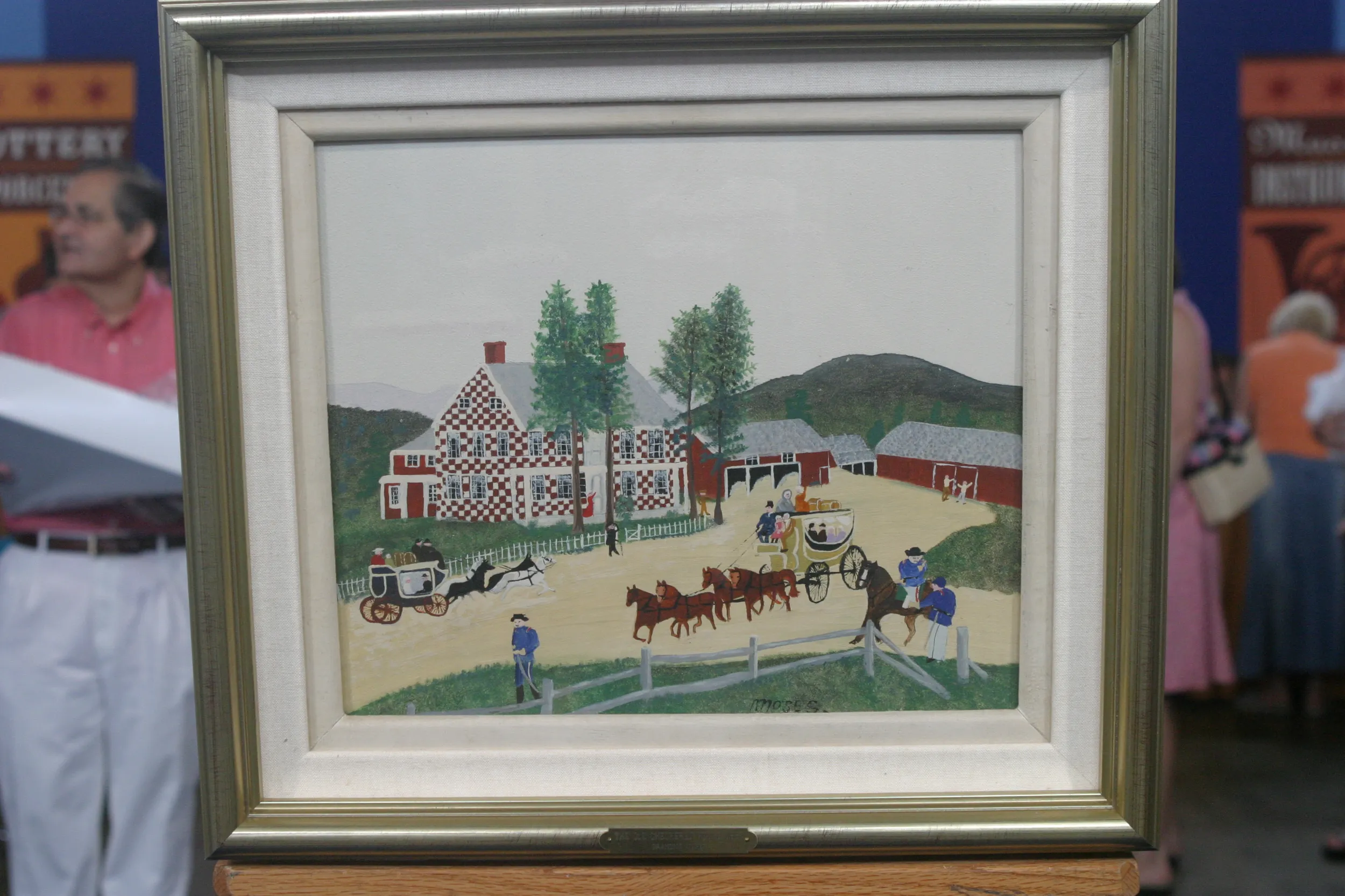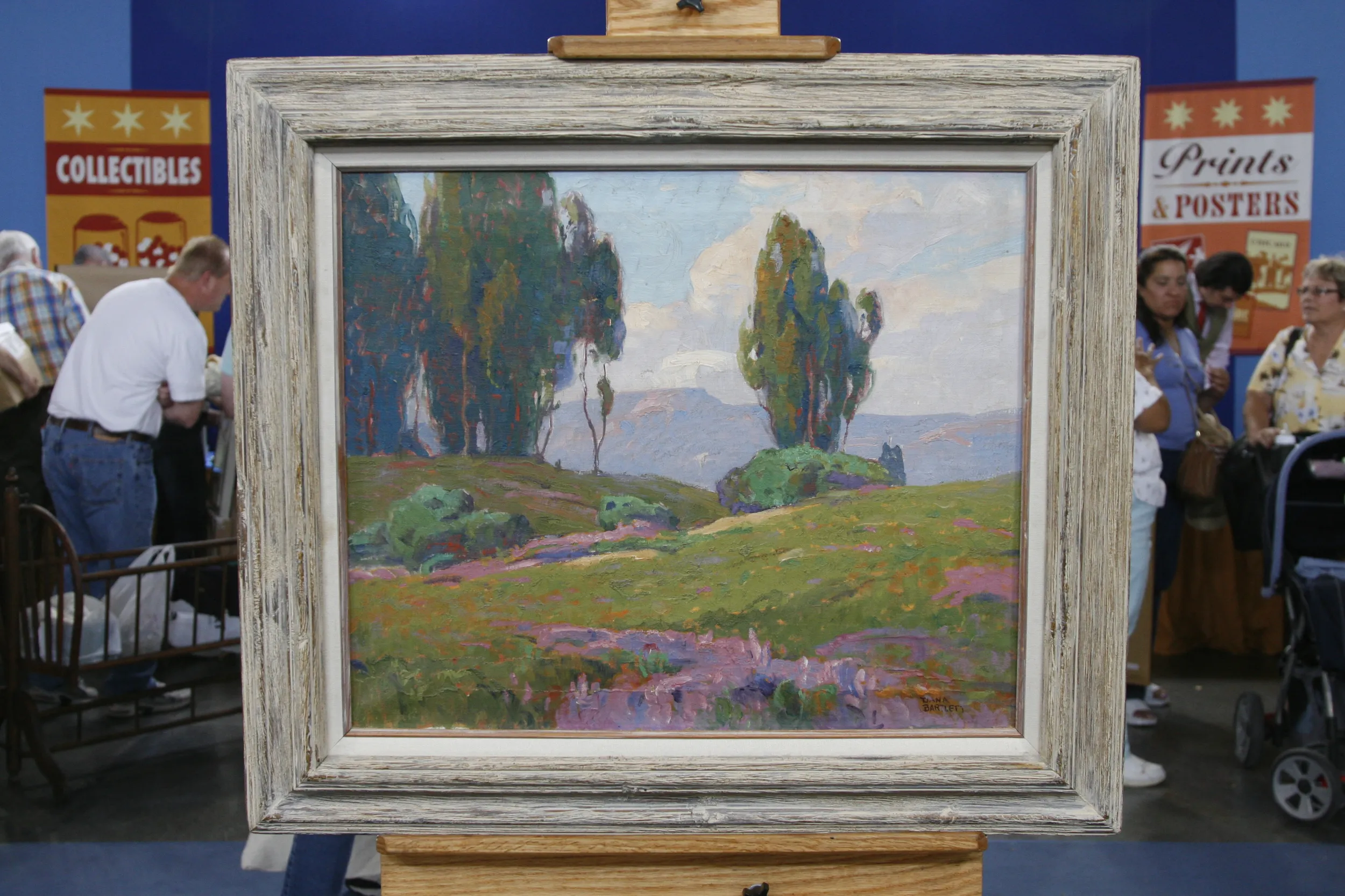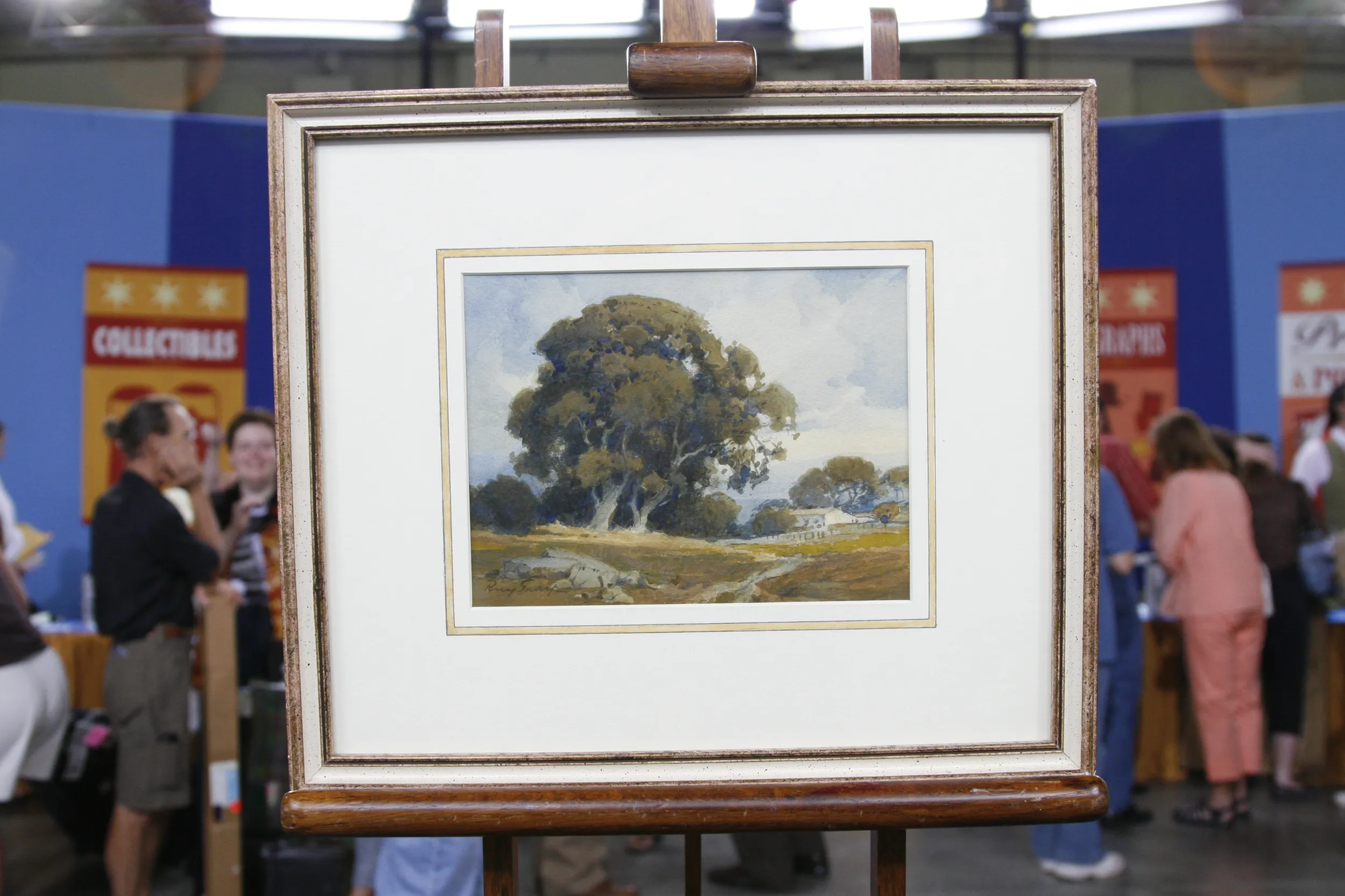GUEST: Well, my grandmother bought it and then my mother had it and now it's mine.
APPRAISER: Do you know where it is?
GUEST: It's a California landscape-- the Santa Barbara area, I believe.
APPRAISER: Absolutely, that's exactly where it is. And the artist, you know who that is.
GUEST: Yes, I looked him up, William C. Otte. Born in 1871, died in 1957. He was born in Wisconsin and moved to New York. Got his artistic education there, and then he came out West and worked for the L.A. "Times." And then back to New York after he was married and was a stockbroker for a while.
APPRAISER: His name is actually William Louis Otte.
GUEST: Oh, William Louis, oh, okay.
APPRAISER: He was a stockbroker and he was very successful. He retired, apparently, in 1913, when he was about 42, and then continued to paint. This particular one is sort of a quintessential Santa Barbara scene-- the hills above here. And then of course it has the orange California poppies and the blue lupines. Now, this work is actually a pastel, which is an oil-based colored chalk. I see you've had it reframed recently.
GUEST: Yes, I have. When I had it framed before, they cut off part of the picture. They cut off just a little bit, but it was enough to make a difference, so I had it redone, and I'm very happy with it now.
APPRAISER: You said you had a little issue with this when you reframed it.
GUEST: Yes, I smeared the signature when... because I took it apart...
APPRAISER: You took it apart yourself, yeah. Pastel, being a chalk, is very fragile, unlike oil painting. And here, you see what happened. Here's our signature-- William Louis Otte, and just a little obliteration of the "O" and the "T" there. It'll affect it a little bit, but not much. Fortunately, we can still see it. One of the things about pastels and works on paper is that you always want to keep them under glass. Any dirt that gets on the surface can't be taken off. As an oil painting, you can actually wipe that off without losing the... the surface. Another thing about the pastel is, you want to keep a distance between there. You put a nice little spacer here that's a good almost half an inch between the glass here and the pastel, so it doesn't rub there... rub it out. Something they did which was... professionally, which... they did this on glass rather than Plexiglas, because apparently, Plexiglas can set up an electrostatic charge that will pull some of the pastel off of the surface.
GUEST: What about fading?
APPRAISER: Fading-- what you can do is get a glass that has a UV filter which filters out the ultraviolet light, which tends to fade the paper, and also you want to keep it out of the direct sunlight as well. Well, this is a work that is, as I said, the quintessential Santa Barbara scene, and it's done in the height of his powers, probably the '20s or '30s. All those elements combined would make it as nice a pastel as I've ever seen by Otte. And I would think today, if I were to put it into an auction, I would probably get an estimated about $8,000 to $12,000.
GUEST: Oh... oh, gosh! That's a lot more than I thought.
APPRAISER: Well, it's a really super painting. His works have been going up a lot in the last few years, yeah.
GUEST: Have they? Thank you. I'm excited about that. I'll keep it in the family.







